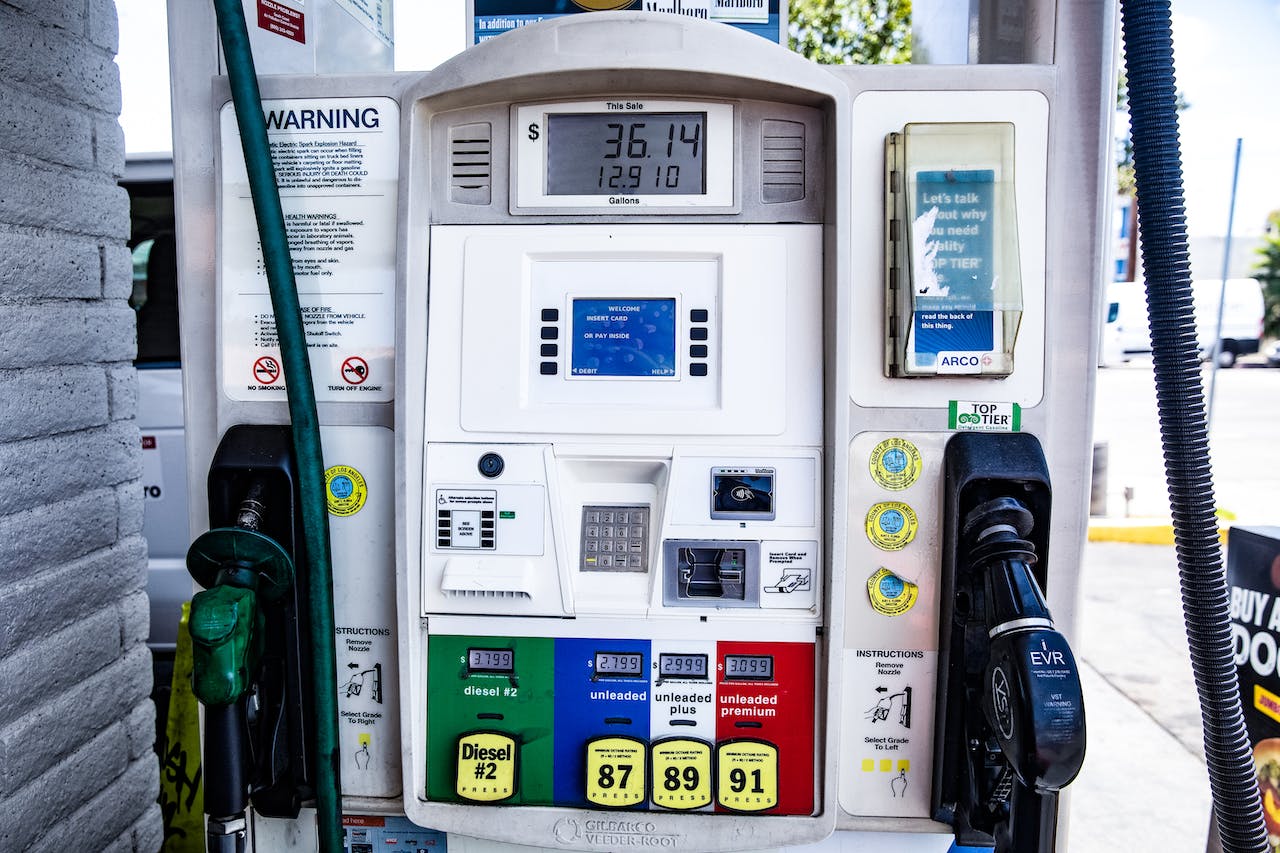Introduction
How to get diesel fuel out of clothes? Accidents happen, and one common mishap involves diesel fuel stains on clothing. Whether you work in an industrial setting, enjoy recreational activities involving machinery, or are just unlucky, knowing how to get diesel fuel out of clothes can be a lifesaver. In this comprehensive guide, we will walk you through the steps to get diesel fuel out of your clothes and provide additional information on preventing such stains. So, let’s dive right in!
Immediate Steps
Removing the Stained Clothing
The moment you notice diesel fuel has stained your clothing, act swiftly. Remove the affected garment to prevent the stain from spreading further. The longer you wait, the harder it can be to remove the stain effectively.
Blotting and Absorbing
To prevent the diesel fuel from setting into the fabric, use paper towels or clean rags to blot and absorb as much of the liquid as possible. Be gentle to avoid pushing the fuel deeper into the fabric.
Pre-Treatment
Before tossing your clothes into the washing machine, pre-treat the stain. Here are a few methods to consider:
Dish Soap Method
- Apply a small amount of dish soap directly to the stain.
- Gently rub the fabric together to create a lather.
- Let it sit for a few minutes.
- Rinse the stained area with cold water.
Pro Tip: Use a mild, colorless dish soap for this method, as some colored soaps may leave residue on your clothing.
Baking Soda and Vinegar Method
- Make a paste by mixing one part baking soda with two parts water.
- Apply the paste to the stain.
- Add a few drops of white vinegar to the stained area.
- Let it sit for 15-30 minutes.
- Rinse the stain thoroughly with cold water.
Pro Tip: The combination of baking soda and vinegar can create a fizzing reaction that helps lift the stain.
Cornstarch Method
- Sprinkle cornstarch generously over the stain.
- Allow it to sit for 15-30 minutes to absorb the diesel fuel.
- Shake off excess cornstarch.
- Brush the area gently to remove the remaining powder.
Pro Tip: Cornstarch is excellent for absorbing oil-based stains, like diesel fuel.
Washing Your Clothes
Machine Washing
- Use the warmest water recommended for the fabric. Check the care label on your clothing.
- Add your regular laundry detergent.
- If the stain remains, consider using a stain-removing detergent. Follow the manufacturer’s instructions for the best results.
- Wash your clothes as usual.
Pro Tip: Consider adding a cup of baking soda or white vinegar to the wash to help break down and remove any remaining diesel fuel residue.
Hand Washing
- Fill a basin with warm water and add a gentle liquid detergent.
- Submerge the stained clothing item.
- Gently agitate the water and garment by gently rubbing the fabric.
- Allow it to soak for 30 minutes.
- Rinse thoroughly with cold water.
Pro Tip: Avoid wringing out the fabric, as this can damage the fibers. Instead, gently press out excess water by pressing the garment between clean, dry towels.
Drying Your Clothes
After washing, air dry your clothes whenever possible. Avoid high heat settings, as they can set any remaining stains. Check the stain before returning your clothing to your regular laundry routine.
Pro Tip: If you’re using a clothes dryer, check for any remaining stains after drying. Heat can set stains, making them more challenging to remove.
Repeat if Necessary
Occasionally, one stain removal attempt may not be enough. Follow the pre-treatment instructions once again and wash the garments if the stain is still noticeable after washing. To properly remove diesel fuel stains, persistence is essential.
Pro Tip: Use a professional stain remover for stains that are difficult to remove. Prior to applying the product to the stain, always test it on a discrete section of the cloth and according to the manufacturer’s recommendations.
Additional Tips
- Avoid using heat on the stain until you’re sure it’s completely gone.
- Test any new stain removal methods on an inconspicuous part of the fabric first.
- Promptness is key when dealing with diesel fuel stains.
Stains on Delicate or Dry-Clean-Only Fabrics
If you have a delicate or dry-clean-only item stained with diesel fuel, take special care:
- Consult a Professional Cleaner: For valuable or delicate garments, it’s wise to consult a professional cleaner who can assess and treat the stain with expertise.
- Explain the Situation: Clearly communicate the nature of the stain and the type of fabric to the cleaner. This will help them choose the best approach.
- Avoid Home Remedies: Attempting DIY stain removal on delicate or dry-clean-only fabrics can lead to irreversible damage.
When to Seek Professional Help
While DIY methods are effective for most cases, there are situations where it’s best to seek professional help:
- Persistent Stains: If the stain remains after multiple attempts, a professional cleaner has the expertise and specialized products to deal with it.
- Valuable or Sentimental Items: For clothing with sentimental value or high monetary worth, it’s safer to consult a professional.
- Dry-Clean-Only Garments: Always trust dry-clean-only garments to experts to prevent damage.
Tips and Tricks
1. Act Quickly
The key to successfully removing diesel fuel stains is prompt action. The longer the stain sits, the harder it is to remove. As soon as you notice the stain, start the cleaning process.
2. Avoid Heat
Heat can set diesel fuel stains, making them more difficult to remove. Avoid using hot water for washing or high heat settings when drying until you are sure the stain is completely gone.
3. Use Mild Detergents
When pre-treating and washing stained clothing, opt for mild, colorless detergents to avoid leaving behind residue or affecting the fabric’s color.
4. Test on an Inconspicuous Area
To be sure a stain-removing technique won’t harm or discolor the fabric, test it first on a discrete section of the material.
5. Commercial Stain Removers
For stubborn stains, consider using a commercial stain remover. Follow the manufacturer’s instructions and be patient; some stains may require multiple treatments.
Pros and Cons
Pros of DIY Stain Removal
- Cost-effective: DIY methods are generally more affordable than professional cleaning.
- Convenient: You can attempt stain removal at home without the need for a trip to the dry cleaner.
- Effective for most stains: DIY methods work well for the majority of diesel fuel stains.
Cons of DIY Stain Removal
- Time-consuming: Stain removal can be a time-intensive process, especially if multiple attempts are needed.
- Potential for mistakes: Incorrect stain removal techniques can damage the fabric or set the stain.
- Limited effectiveness: Some older or stubborn stains may not respond well to DIY methods, requiring professional help.
How to Get Diesel Fuel Out of Clothes
Preventing Diesel Fuel Stains
Prevention is the best approach to dealing with diesel fuel stains. Here are some tips to avoid encountering this issue in the first place:
- Use Protective Gear: If you work with diesel fuel regularly, invest in appropriate protective clothing to minimize direct contact with your garments.
- Handle Fuel with Care: When refueling or working with diesel, take extra precautions to avoid spills and splashes.
- Proper Storage: Store diesel fuel containers in a safe and upright position to prevent leaks.
- Inspect Equipment: Regularly inspect machinery and vehicles for fuel leaks, and address any issues promptly.
- Laundry Separation: When washing fuel-stained clothes, wash them separately from your regular laundry to prevent cross-contamination.
- Educate and Train: If you work in an industry where diesel fuel exposure is common, ensure that you and your colleagues are trained in safe handling practices.
By following these preventive measures, you can significantly reduce the chances of encountering diesel fuel stains on your clothing.
Conclusion
How to get diesel fuel out of clothes: Don’t let a diesel fuel stain ruin your favorite clothing items. With these simple and effective steps for stain removal, as well as tips and tricks to prevent future stains, you can successfully remove diesel fuel stains and restore your clothes to their former glory. Remember to act quickly, use appropriate pre-treatment methods, and wash your clothes with care. And when in doubt, seek professional help, especially for valuable or delicate garments.
Frequently Asked Questions
Q: Can I use any dish soap for pre-treatment?
A: Yes, most dish soaps work effectively for this purpose.
Q: What if the stain is old and set in?
A: Older stains may require more effort, but it’s still worth trying the steps mentioned in this guide.
Q: Can I use hot water for washing my clothes?
A: Hot water can set the stain, therefore it’s better to use the warmest water that your cloth can handle.
Q: Are there any fabrics that are more susceptible to diesel fuel stains?
A: Natural fibers like cotton are more prone to stains, but these methods should work on a variety of fabrics.
Q: Can I use home remedies for dry-clean-only fabrics?
A: It’s not recommended; to consult a professional cleaner for delicate or dry-clean-only garments.
Check Out Added Reads: How to Get Security Tags Off Clothes



